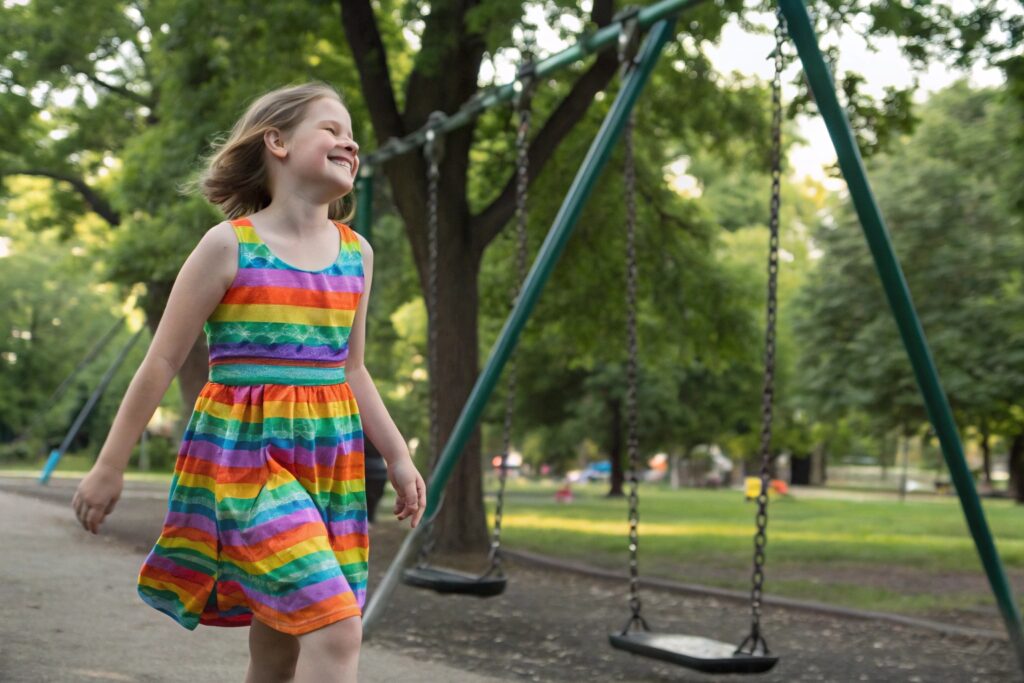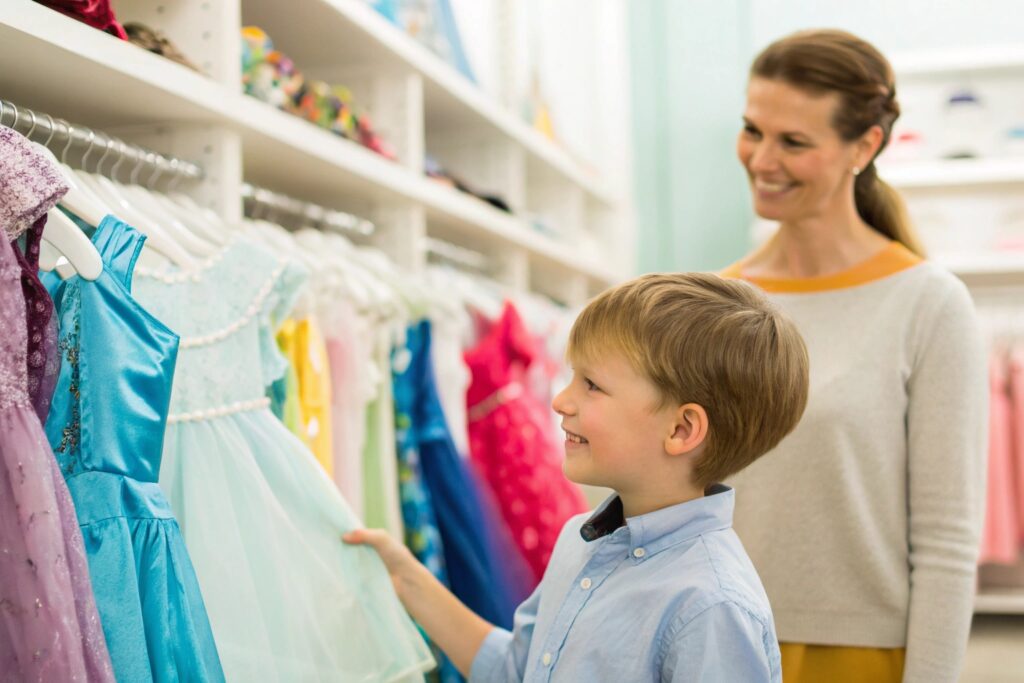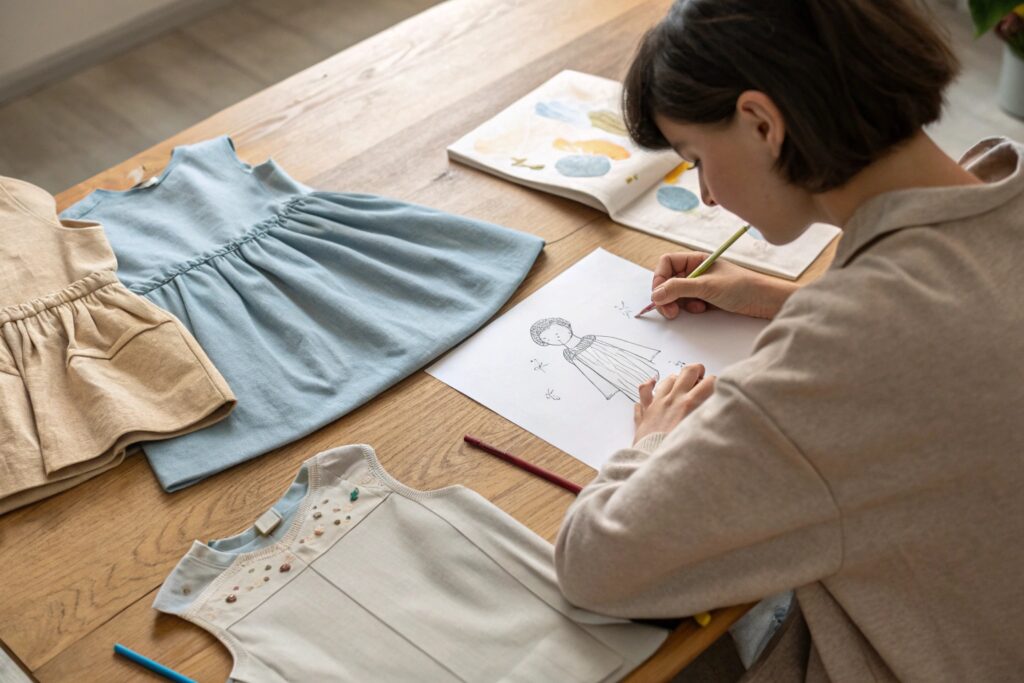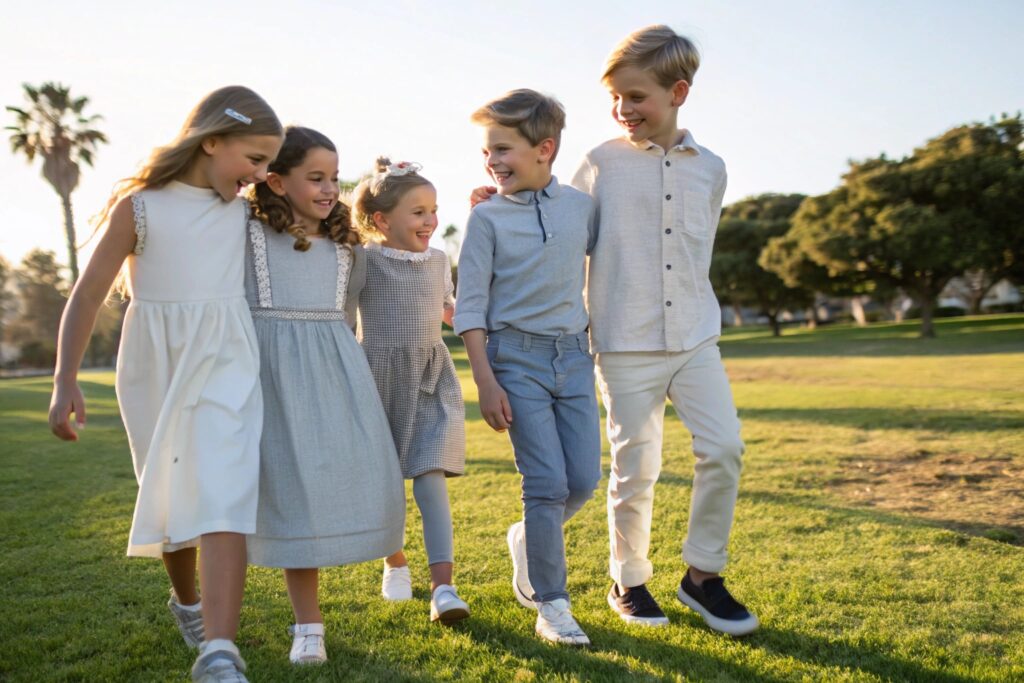Some parents and children wonder if boys can wear dresses to school without judgment. Society has traditionally associated dresses with girls, but fashion is evolving.
Yes, boys can wear dresses to school. While dress codes vary, many schools and parents now support gender-neutral clothing choices, allowing kids to express themselves freely.
This article explores why more parents are embracing this change, how designers create dresses for all kids, and the impact of breaking gender norms in children’s fashion.
Is it okay for boys to wear dresses?
Historically, clothing has been divided by gender. But should fashion really have rules?
Yes, it is okay for boys to wear dresses. Clothing should be about comfort and self-expression rather than gender restrictions. Many parents, schools, and brands are now embracing more inclusive fashion choices.

Why do some people believe boys shouldn’t wear dresses?
Traditional gender norms have shaped fashion for centuries. Some concerns parents might hear include:
- Social judgment – Fear of teasing or bullying.
- Dress code policies – Some schools have outdated clothing rules.
- Cultural beliefs – Some societies associate dresses only with girls.
What is changing in modern children’s fashion?
- More gender-neutral clothing lines – Major brands now offer unisex fashion.
- Parental support for self-expression – Many parents let kids choose their outfits.
- School policies evolving – Many schools now support inclusive dress codes.
| Concern | Reality Today |
|---|---|
| Schools might ban dresses | Most schools allow them unless there’s a strict uniform policy. |
| Kids will be teased | While bullying exists, more parents are teaching inclusivity. |
| Dresses are "only for girls" | Historically, boys also wore dresses (e.g., robes, tunics). |
Fashion is meant to be fun. If a boy wants to wear a dress, it shouldn’t be a problem.
Why More Parents Support Boys Wearing Dresses?
Not long ago, parents were hesitant about boys wearing dresses. What changed?
More parents now support boys wearing dresses because they prioritize self-expression, emotional well-being, and gender inclusivity in fashion. The focus has shifted from gender rules to individual comfort.

What are the main reasons parents are embracing change?
- Children’s confidence matters more than labels – Parents want their kids to feel comfortable in their clothing choices.
- Breaking stereotypes benefits all kids – Removing gender restrictions in clothing teaches equality.
- Fashion is becoming more fluid – Many kidswear brands now create gender-neutral collections.
- Toys, colors, and styles are evolving – Parents already let boys play with dolls, wear pink, or grow long hair.
| Reason for Support | How It Helps Kids |
|---|---|
| Encourages self-expression | Kids grow up more confident. |
| Promotes inclusivity | Reduces gender-based bullying. |
| Reflects modern fashion | Unisex styles are now common. |
What do experts say?
Child psychologists suggest that allowing children to wear what they like boosts their confidence. Denying them choices based on outdated gender roles can make them feel restricted or ashamed.
Many parents now understand this and encourage their children to dress however they feel most comfortable.
How to Design Dresses for All Kids?
Fashion designers are rethinking traditional gendered clothing. How can they create dresses that appeal to all children?
Designing dresses for all kids involves using neutral colors, functional styles, and comfortable fabrics that work for every child, regardless of gender.

What are key elements of gender-neutral dress design?
- Comfort-first approach – Soft, breathable fabrics that allow movement.
- Neutral colors and patterns – Avoiding heavily gendered colors like only pink for girls.
- Functional and adjustable features – Pockets, stretch fabrics, and adjustable straps make designs more practical.
- Versatility in styling – Dresses that can be layered or worn with pants.
| Design Feature | Why It’s Important |
|---|---|
| Adjustable waistbands | Fits different body types. |
| Muted and fun colors | Appeals to all kids. |
| Pockets in dresses | Increases functionality. |
| Comfortable, soft fabric | Allows free movement. |
Which brands are making gender-neutral clothing?
Some kidswear brands leading the change include:
- Mini Rodini – Playful, gender-fluid clothing.
- Primary – Simple, unisex basics.
- Mori – Organic and sustainable clothing for all kids.
These brands focus on creating pieces that any child can wear comfortably, regardless of gender.
Breaking Gender Norms in Children’s Fashion?
For years, children’s fashion followed strict gender rules. But is this still necessary?
Breaking gender norms in children’s fashion encourages inclusivity, creativity, and individuality. More brands, parents, and schools are supporting gender-neutral clothing.

What outdated fashion norms are changing?
- Pink vs. Blue Divide – Kids can wear any color, not just pink for girls and blue for boys.
- Dresses Only for Girls – More brands are creating dresses for all kids.
- Toy & Clothing Labels – Stores are removing "boys" and "girls" sections.
| Outdated Norm | Modern Change |
|---|---|
| Boys can’t wear skirts | Gender-neutral designs are common. |
| Girls should wear pink | Neutral colors are more popular. |
| Boys’ clothes must be tough-looking | Soft and playful designs are now for all kids. |
What are the benefits of gender-neutral fashion?
- Encourages self-expression – Kids can explore their style without limitations.
- Supports inclusivity – Reduces social pressure to conform to stereotypes.
- Reflects changing social attitudes – More families and schools are embracing fashion freedom.
Many parents today let kids choose their outfits rather than forcing gendered expectations. As more brands adapt, gender-neutral fashion will likely become the norm.
Conclusion
Boys can wear dresses to school, just like any other child. Fashion is about comfort, confidence, and self-expression. As more parents, brands, and schools embrace inclusivity, kids can dress in ways that make them feel happy and comfortable.










